We love to eat here at the studio. There is a full size kitchen where we routinely cook meals for each other; everyone sits down together at our long table to share food and conversation. One of our Care Cards encourages us to “Eat more food. Not too much, mostly plants.” In that spirit, we try to keep our meals healthy and full of fresh vegetables. Thus, it made a lot of sense for us to become an early adopter of the Grove Labs home ecosystem, called a “Grove.”
Grove Labs is a startup company located very close to us, over in Somerville, MA. It began with a homemade aquaponic garden shared by two classmates and friends at MIT. They quickly realized this was a concept they could share with the world, and anyone could do it! The goal was to afford people access to healthy, sustainably-grown food. The pair raised money and built prototypes, and it wasn't long before they had a team and product built up and were ready to take on early adopters like us.
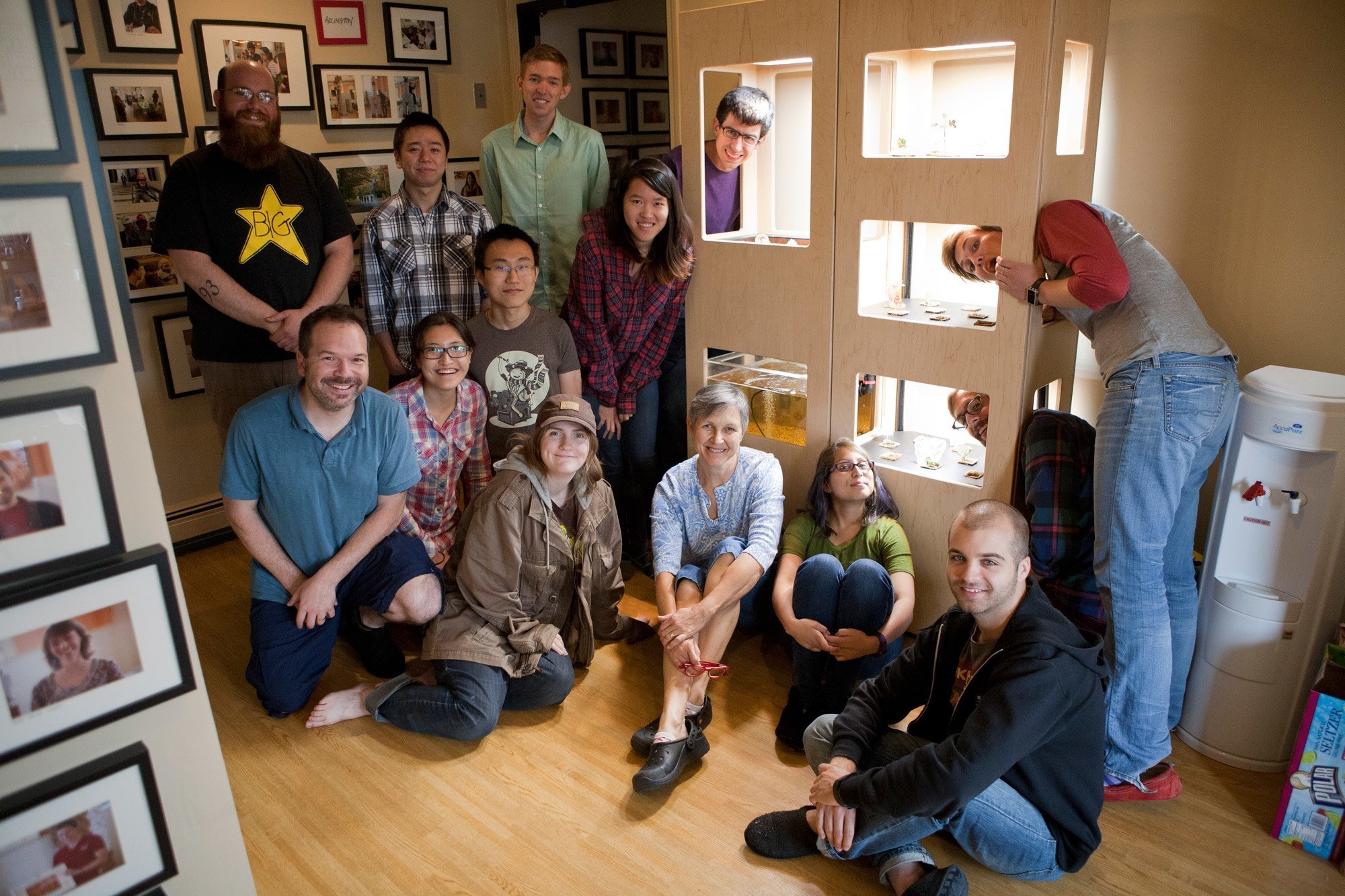
Just about the whole gang, very excited, in front of our new Grove.
Setting up the Grove was exciting. We carried the towers up to our kitchen and leveled them side by side. Then we connected the reservoirs of the towers and filled them up with water.
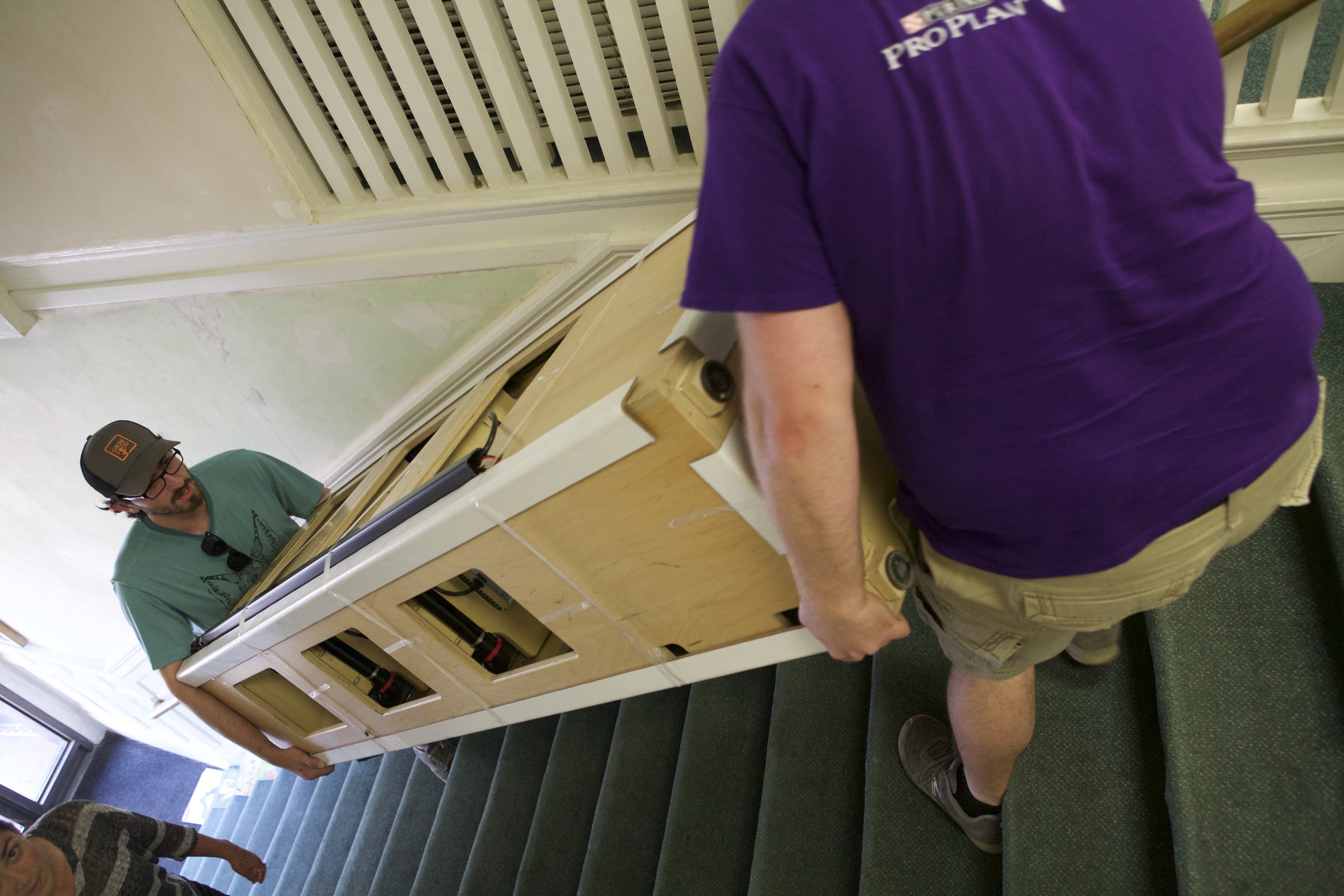
Carrying the towers up to our kitchen.
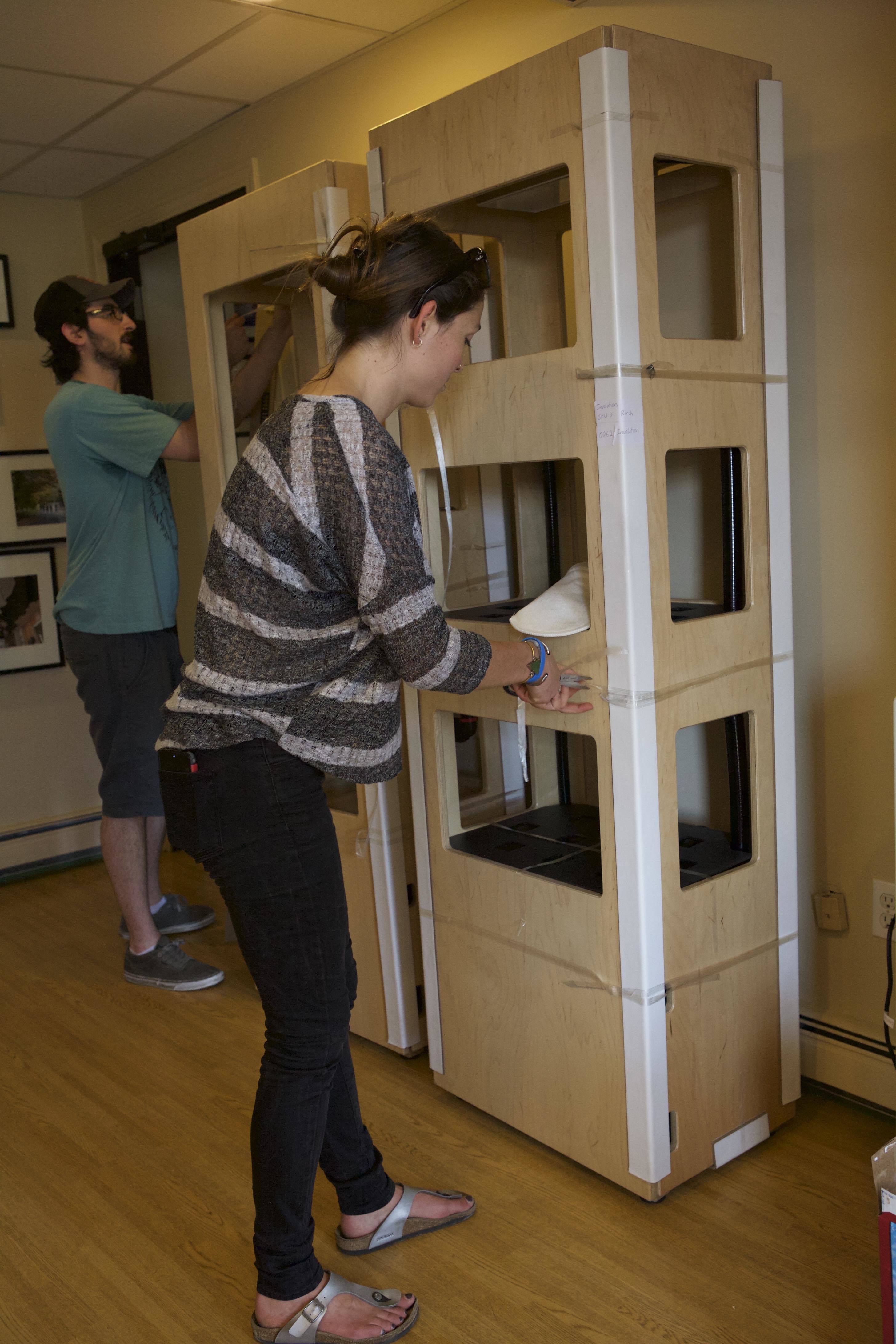
Leveling the towers.
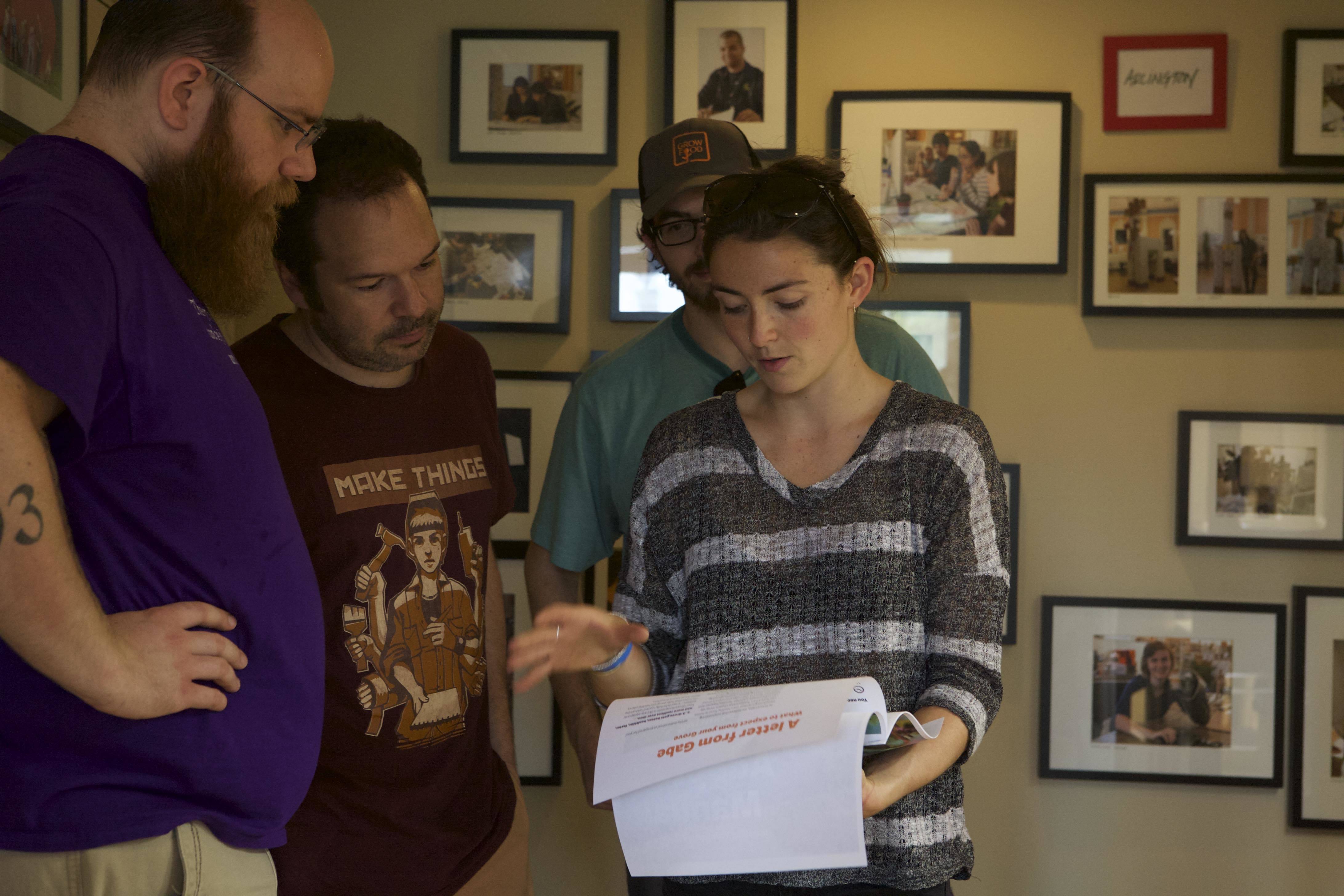
The Grove Labs team members Emily and Brooks explain how to jumpstart the ecosystem.
The Grove is a self-sustaining ecosystem and doesn’t require much work to maintain. It starts with the water reservoirs in the bottom of the system, which breed friendly bacteria. These bacteria are responsible for breaking down waste and ammonia into nutrients that plants need. In the fish tank (which has to remain without fish until the ecosystem is kickstarted and the water is healthy for aquatic life), our new pets will produce the waste products that the bacteria need to consume. This whole process of fish waste -> bacteria conversion -> plant food is known as cycling. The Grove is designed to cycle in as fast as two weeks.
The tank, reservoirs, and planting basins are all connected through a series of tubes, filters, drains, valves, and pumps. This allows the system to circulate water and nutrients, much like a natural outdoor ecosystem does. The intervaled water circulation process is maintained by Grove OS. That’s right, this beauty is sort of like a cyborg. On the top of the Grove towers, there is an elegantly designed motherboard and electronic interface (the setup sort of reminds me of a guitar amplifier).

A look at the manual user interface on the Grove.

The motherboard can be found inside the head unit.
This motherboard houses the Grove operating system and is also connected to Wi-Fi. The Grove OS dictates when water cycling processes should occur. On top of that, the Grove also has built in “grow lights” (lights that emit on three bands of the electromagnetic spectrum appropriate for photosynthesis) for each plant growing area, as well as the fish tank. Not only does the Grove maintain the water cycling, but it also controls the sun (well, the plants think it’s the sun, at least)!
Still, the best part of Grove OS is that it’s connected to the internet, and we interact with it through a mobile web app. We can log in to control the Grove by setting timers for lights and water pumps.
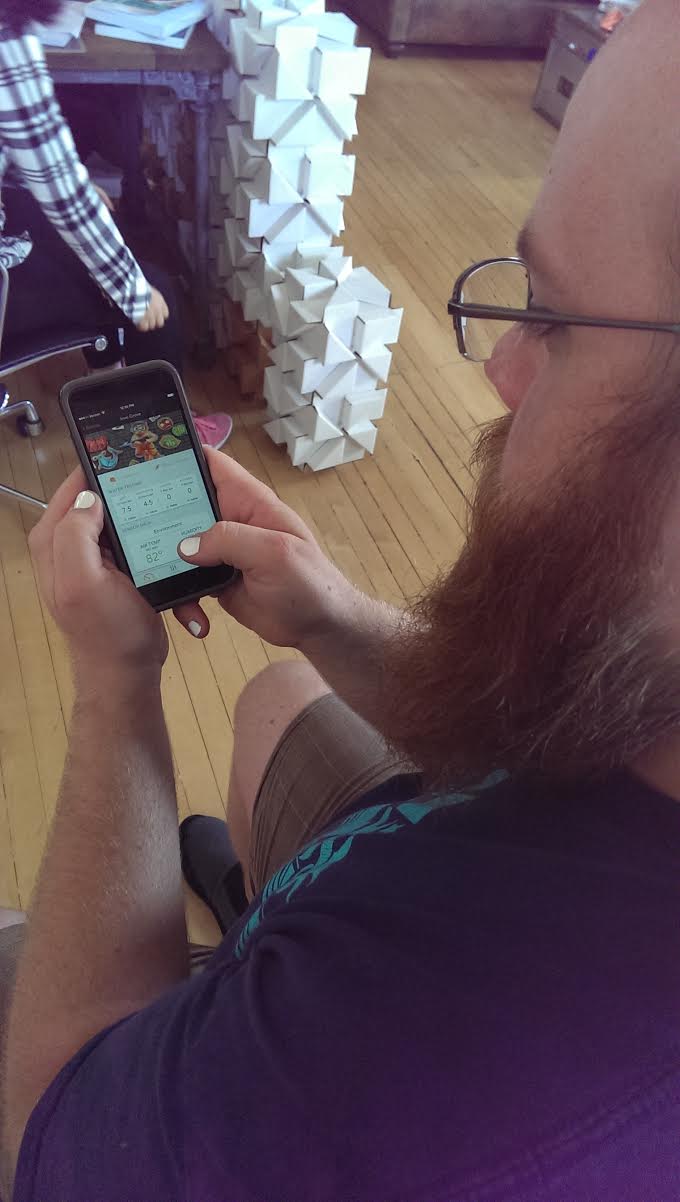
Using the Grove OS app.
We routinely check the pH, ammonia, nitrite, and nitrate levels in the water by testing them manually and can track (and soon chart) them over time. This provides insight into how our Grove is cycling and performing, and serves as an indicator of the overall health of our system. It’s also pretty fun and involves lots of cool colors.
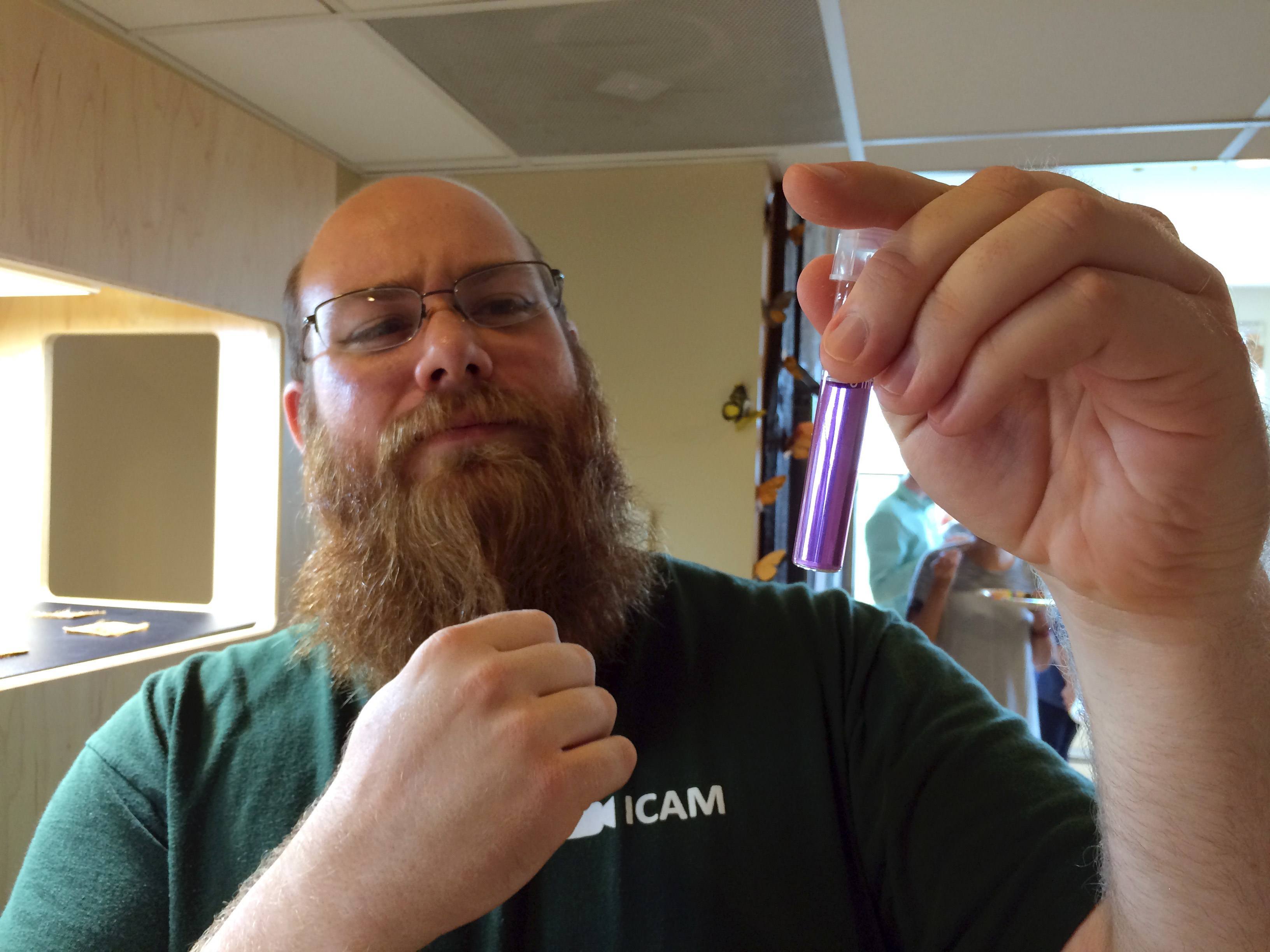
SCIENCE!
We decided to start out growing some of the recommended plants that came with our Grove kit. We planted arugula, chinese cabbage, a couple other types of lettuce, parsley, cilantro, shishito peppers, and lots of tomatoes and strawberries!
To help us keep track of what we planted and where, the studio got together and did some caricatures for the different plants, and the empty fish tank.

We used the largest grow bed to plant tomatoes. They aren't sitting in cocoa pebbles however. Those balls absorb nutrients from the water with each pump cycle and store them for the plants!

All the artists in the studio contributed labels.

Our fish tank was too lonely.
Now we’re waiting for the Grove to complete its first cycle. Some little seedings have already started growing, and the health of our ecosystem seems pretty spot on. Once the cycle has completed and the water chemicals and nutrients reach their desired levels, we can introduce our fish. In about 5 more weeks, we should be able to harvest our first batch of veggies and fruit.
